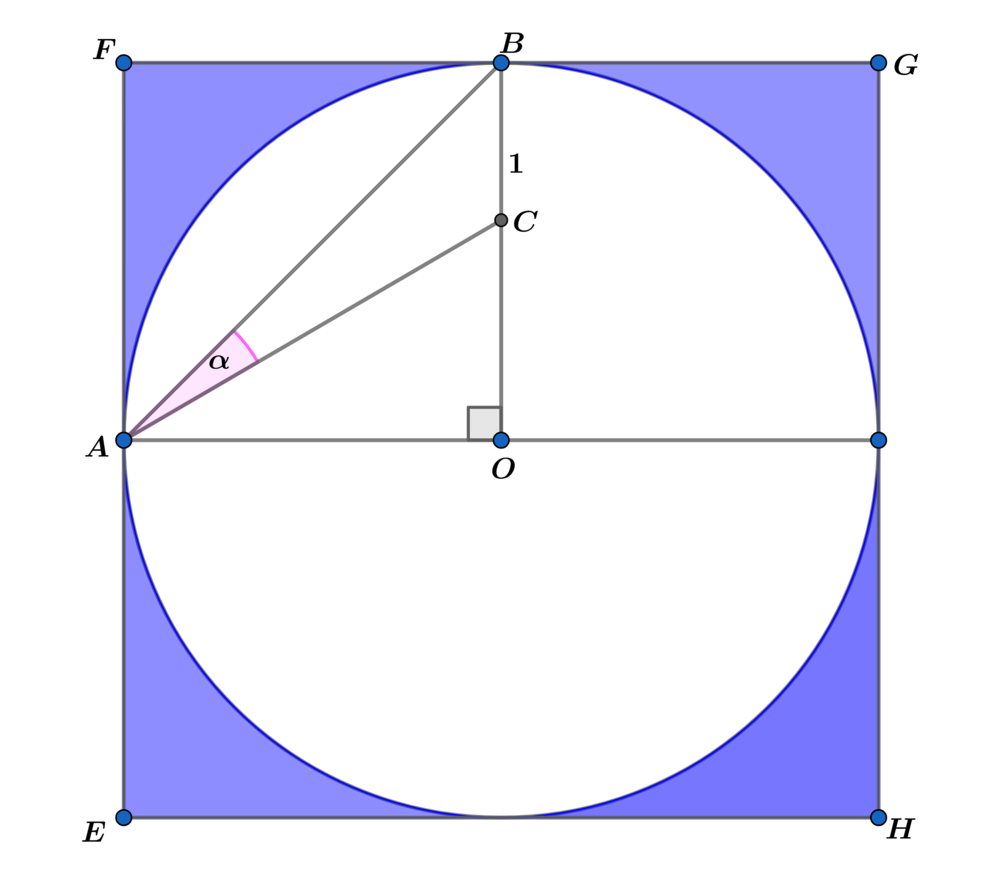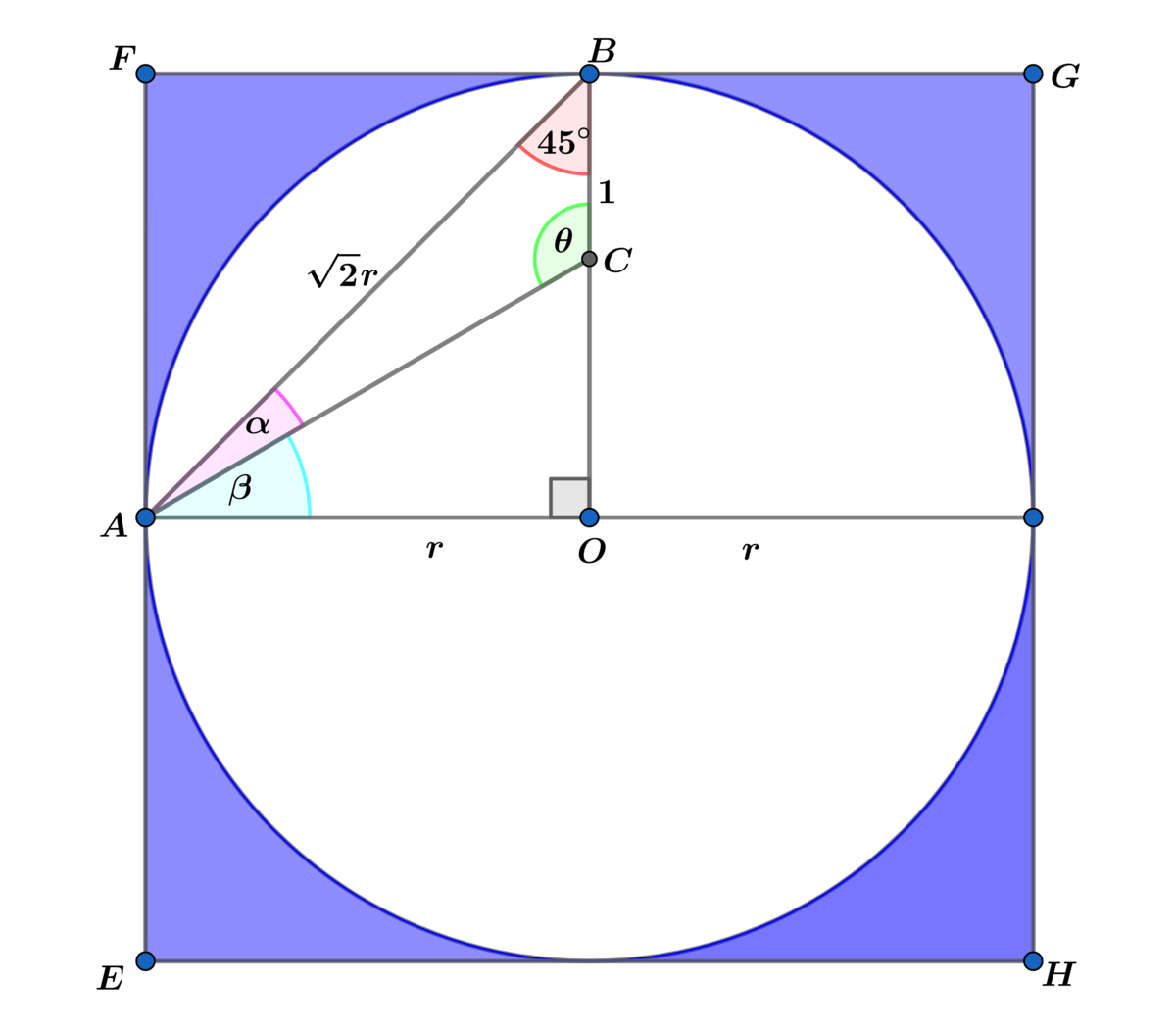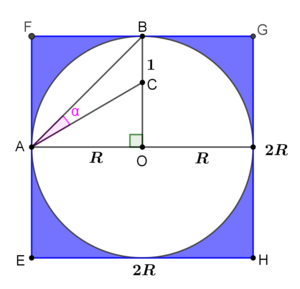What's the measure of the angle?

In the above diagram, the circle with center O is inscribed in square E F G H . If the sum of the areas of the shaded blue regions is 2 π 2 and B C = 1 , find α (in degrees).
The answer is 14.760926556951.
This section requires Javascript.
You are seeing this because something didn't load right. We suggest you, (a) try
refreshing the page, (b) enabling javascript if it is disabled on your browser and,
finally, (c)
loading the
non-javascript version of this page
. We're sorry about the hassle.
3 solutions

Let A T be the sum of the blue shaded regions
⟹ A T = 4 r 2 − π r 2 = ( 4 − π ) r 2 = 2 π 2 ⟹
r = 2 ( 4 − π ) π and α + β = 4 5 ∘ ⟹ α = 4 5 ∘ − β ⟹ θ = 9 0 + β and
m = 2 r = 4 − π π
Using law of sines on △ A B C ⟹ 1 sin ( 4 5 ∘ − β ) = m sin ( 9 0 ∘ + β ) ⟹
4 − π π sin ( 4 5 ∘ − β ) = sin ( 9 0 ∘ + β ) ⟹
π cos ( β ) − π sin ( β ) = 2 ( 4 − π ) cos ( β ) ⟹
( π − 2 ( 4 − π ) ) cos ( β ) = π sin ( β ) ⟹ tan ( β ) = π π − 2 ( 4 − π ) ⟹
β = arctan ( π π − 2 ( 4 − π ) ) ⟹ α = 4 5 ∘ − arctan ( π π − 2 ( 4 − π ) ) ≈ 1 4 . 7 6 0 9 2 6 5 5 6 9 5 1 ∘ .
 The area of the blue region,
A
b
l
u
e
, can be expressed as
The area of the blue region,
A
b
l
u
e
, can be expressed as
Area of square
−
Area of circle
, thus
A b l u e = ( 2 R ) 2 − π R 2 ⇒ 4 R 2 − π R 2 = 2 π 2 ⇒ R 2 = 8 − 2 π π 2 ⇒ R = 8 − 2 π π On the right △ O A B ,
tan ( ∠ C A O ) = A O C O ⇒ tan ( 4 5 ∘ − a ) = R R − 1 ⇒ 1 + tan a 1 − tan a = 1 − R 1 ⇒ tan a = 2 R − 1 1 = 2 8 − 2 π π − 1 1 = 2 π − 8 − 2 π 8 − 2 π Hence,
a = tan − 1 ( 2 π − 8 − 2 π 8 − 2 π ) ≈ 1 4 . 7 6 ∘
Let the radius of the circle be r . Then the side length of the square is 2 r . And the area of the blue regions is:
( 2 r ) 2 − π r 2 = 2 π 2 ⟹ r 2 = 2 ( 4 − π ) π 2 ⟹ r = 2 ( 4 − π ) π ≈ 2 . 3 9 7 6 6 3 1 1 3 5
Therefore
α = 4 5 ∘ − tan − 1 ( r r − 1 ) ≈ 4 5 ∘ − 3 0 . 2 3 9 0 7 3 4 4 3 ∘ ≈ 1 4 . 8